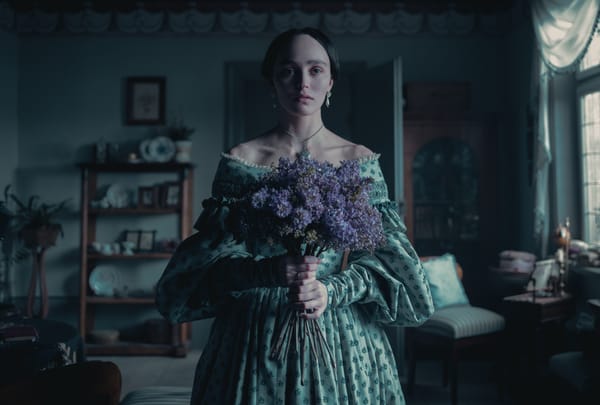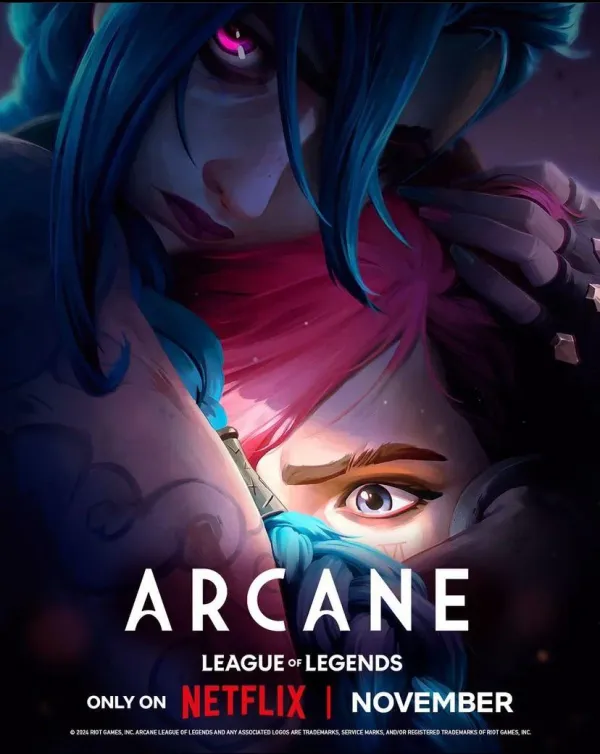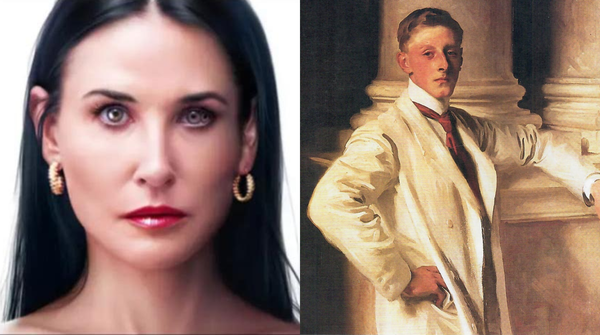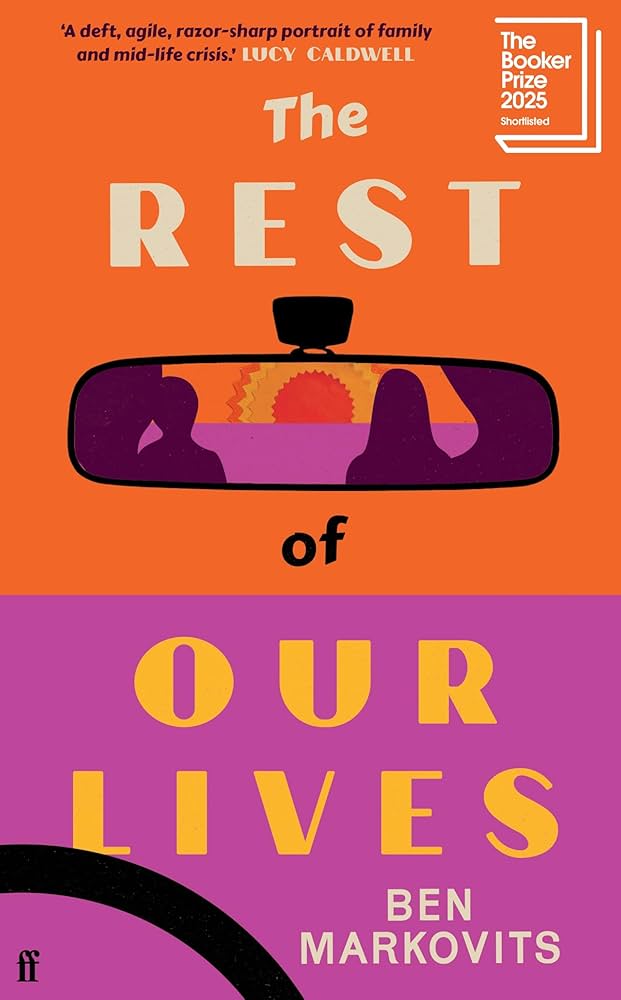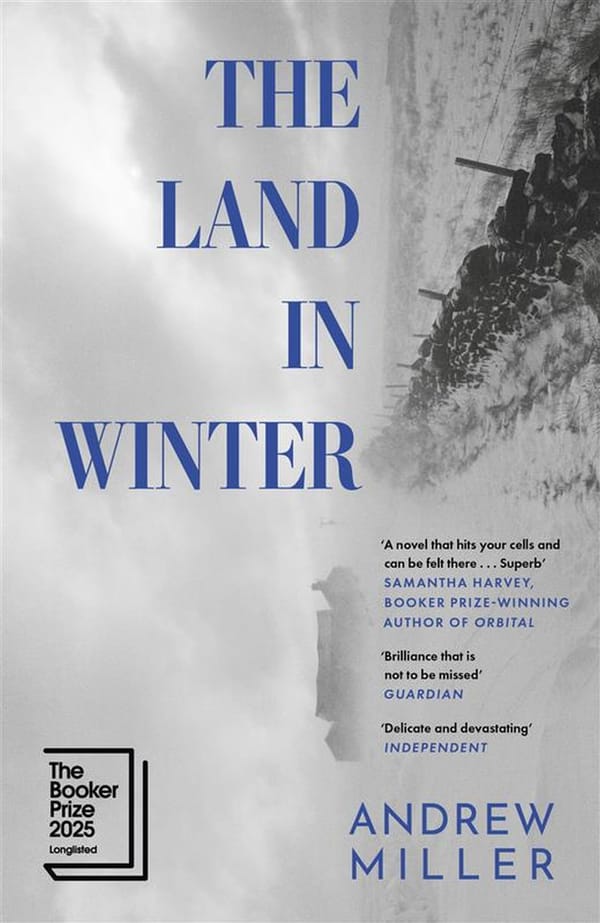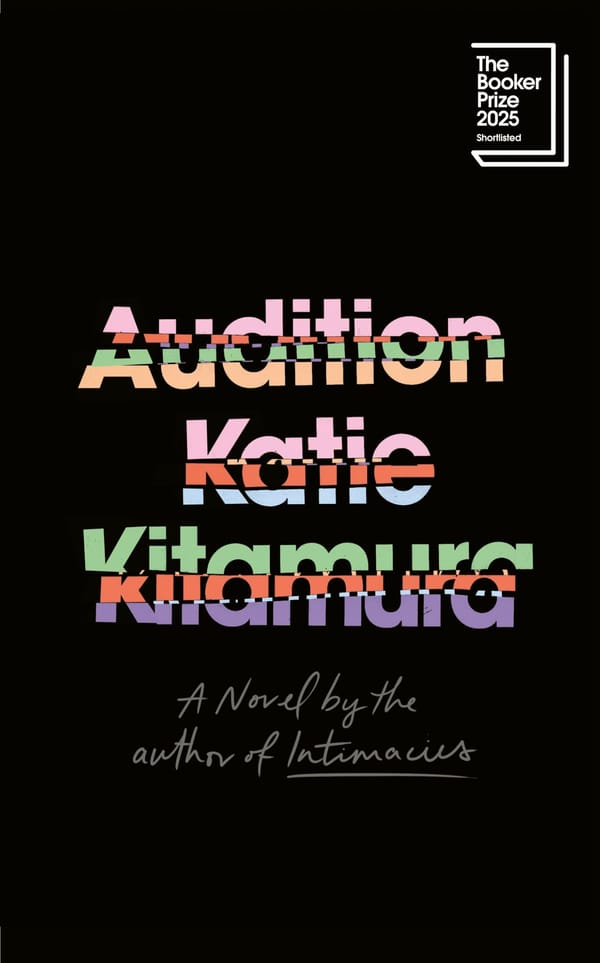The Brutalist
A stunningly shot movie from last year, depicting an immigrant architect's intense struggle for unfettered creative freedom
Hot off the tails of nearly a dozen Oscar nominations, Brady Corbet’s third cinematic directorial work The Brutalist is quickly cementing itself as one of the largest cinematic achievements of the 2020s. It battled through a difficult pre-production during the COVID-19 pandemic but has finally been realised on screen after its conception eight years ago. Adrien Brody, Felicity Jones, and Guy Pearce have all received acting Academy nominations for their stellar performances which must be seen, but, as is common in the current cinematic climate, films seem to leave cinemas as quickly as they enter. The movie is a celebration of architecture and it’s clear that all involved deify the craft and were eager to share that love with the rest of the world.
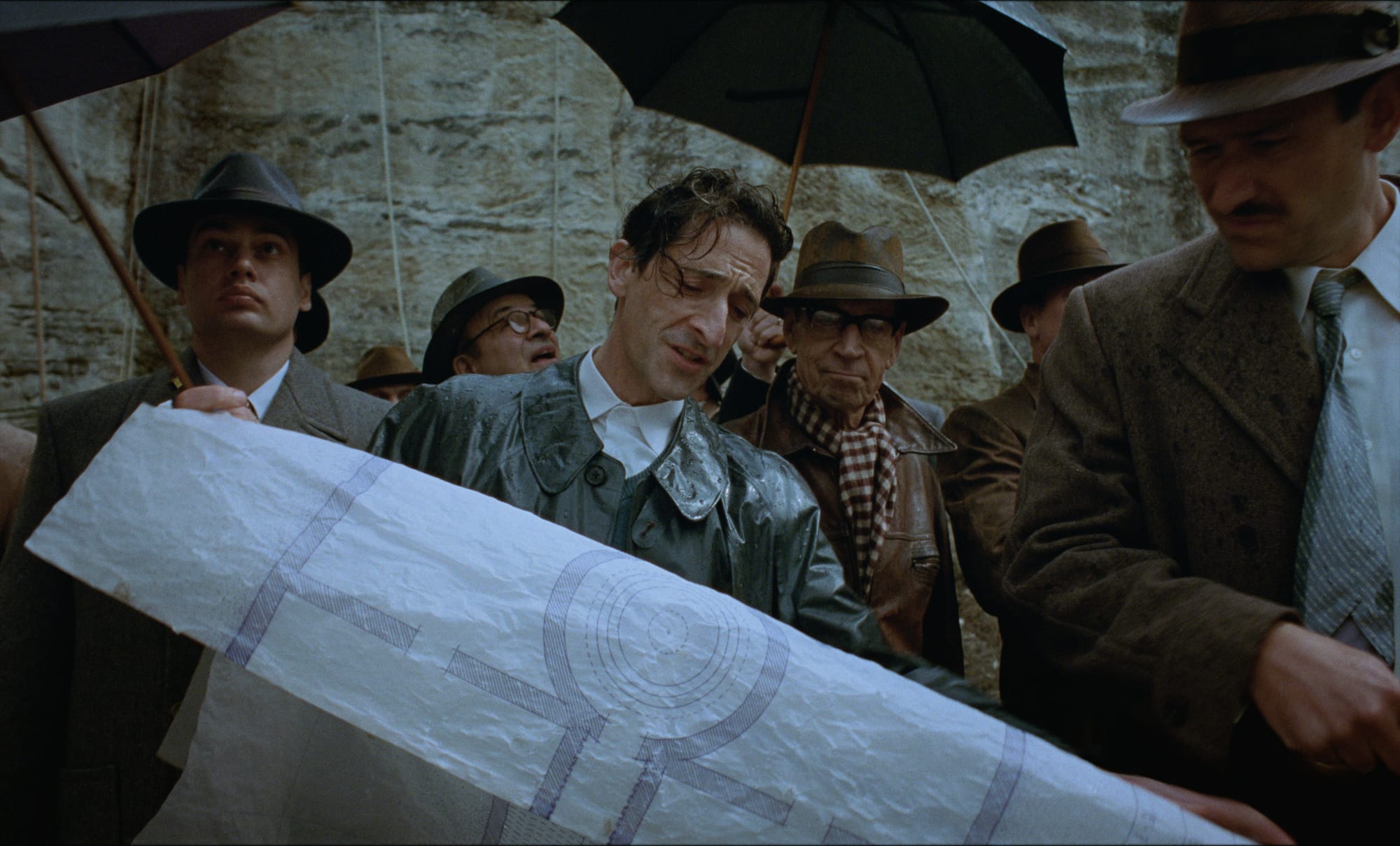
Overview
Following the Second World War, Jewish Hungarian architect László Tóth immigrates to the United States following his internment in a German concentration camp. Isolated and without work, Tóth is unable to see his wife and niece, who are stuck in Europe because of health issues. The first half of the film shows Tóth finding his footing in America, trying to secure a job whilst still being the victim of persecution even after the end of the war. With his passion for architecture, Tóth finds small work in a remodelling business but is quickly dismissed and ends up as a construction worker, on the sites that he is so desperate to design, yet miles from a drawing board. By some miracle, Tóth is approached by a wealthy gentleman who commissions him, with nearly full creative freedom, on a years-long brutalist memorial building. For the next two and a half hours, the audience are subjected to the monomaniac Tóth as he becomes so singly focused on the idea of the project, seemingly for very little reason. The work compels him entirely and, even when he is able to escape its gravity, Tóth is pulled back one last time. In many ways, it reminds me of The Godfather where the weight of such a commitment crushes a person and keeps drawing them in again and again. The film explores Tóth’s relationship to the work but also importantly explores the miasmic relationship between Tóth and his client. The wealthy businessman Harrison Lee Van Buren treats Tóth like a toxic partner, alternating between treating him like a messianic sculptor of form and discarding him for little reason. This relationship is as addicting to Tóth as the heroin habit he picked up due to the pain medication he took during his imprisonment.
Building
The building itself is central to the film and at times feels itself like a character, despite not being fully constructed for a majority of the narrative. The Van Buren Community Centre, a memorial to Harrison’s late mother, hangs over the narrative, looming over Tóth as a Damoclean reminder of how precarious his position as chief architect for Harrison is. The building is nominally a tribute to Harrison’s mother, but the project is just a way for Harrison to feel like he is doing a good deed, both in the tribute and in the benefits it would supposedly provide for the nearby town, while all he needs contribute to the project is money. His real character is evident in how callously he treats Tóth and the other workers under his employ. While in Hungary, Tóth built several brutalist buildings and we’re shown scenes of them being very dear to him. This project however, his first in America, is targeted on all sides by requirements from both Harrison and the local mayoral board. Tóth is forced to include a Catholic chapel inside the structure despite his Jewish faith. Harrison demands the building balloon in scale until the project is bloated and a second architect is brought on to cut costs, at the expense of some of Tóth’s details.

All of this is a metaphor for the fact that, even now, Tóth is not welcome and must conform to the norms of the “free” American dream, lest they be beaten into him. Tóth has many enigmatic requests for the specifics of the structure which are as arbitrary as they are distressing for him when they get adjusted. As the audience, it is natural to assume that this is another expression of Tóth’s growing mania, but the significance is eventually revealed, at the point where it no longer matters. He’s already been through all that struggle. We have already judged him for his neuroticism.
Length
The film clocks in at a total of 3 hours and 35 minutes which is gargantuan, although that does include a fifteen-minute intermission integrated into the film itself, which was appreciated. The intermission separates the film cleanly into its two acts, which do feel distinct enough to justify the cut. In the past, the intermission was a fairly common occurrence that allowed the projectionist to change over the reels of film, but has since been phased out with the advent of digital technology. I, for one, thought that The Brutalist’s decision to include an interval was a good idea. It can’t be understated how cathartic it is to haul yourself out of that chair and to walk around for a short time, stretching your legs and allowing yourself to mull over what you’ve just watched. And then you sit down again and there’s more film! Truly splendid.
Even now, Tóth is not welcome and must conform to the norms of the “free” American dream, lest they be beaten into him
With this all being said, The Brutalist’s length was never felt on me for a moment – I was taken aback when the interval signalled the halfway mark so soon. A film like Killers of the Flower Moon, while undeniably great, wore on me near the end in a way that this film just didn’t. I think to make a film with such a monumental length, there is an agreement for all those working on it that this is a colossal piece of art, and that it must be treated as such. It would be a disservice to the concept of art itself to produce something boring. It’s a commitment to an immense human effort to produce something beautiful – not unlike Tóth’s own.
Direction
When writing a long-form piece of text, it can be very easy to slip into a spiral of putting less and less effort in as you become more consumed by the desire to be done with it all. Likewise, one might expect that a film of this length would lead to an inconsistent, tapering quality in direction. This wasn’t present and I was regularly blown away by the sheer magnificence of shots present in the film. One challenge for Corbet must have been finding novel ways to shoot the building, which so much of the film hinges on. This was aided by the fascinating design of the Van Buren Institute, likely a result of Judy Becker’s production design. The building is a product of inspiration from decades of real-life brutalist architecture, with its concrete spires and liminal, water-filled lower chambers, with the barren chapel undoubtably the centrepiece. Despite the film’s brutalist namesake, the film is not afraid to have stunningly beautiful, colourful sequences. One of real standout nature to me was the trip Tóth and Harrison take to Italy to inspect the marble for the altarpiece. The ultrawide, epic shot of the quarry hangs on the screen for twenty seconds at least, which still wasn’t enough for me to absorb the magnitude of the setting. When the film shifts its focus to the single block of marble being chosen for the project, it takes the opposite approach and moves in close. The otherworldly, internal beauty of the slab and all of its prismatic colours take your breath away, all accompanied by soft, howling winds. When the characters describe themselves as having a spiritual experience with the marble, it’s more than a line. Corbet has truly imprinted God into your soul in that moment.

Production and Budget
One of the most impressive things about the film is the fact the whole production was independently financed and cost less than $10 million in all. It might cost a person more to build the Van Buren Institute in real life than it did to make this film. The low budget is not evident: the film has an all-star cast, a monumental length (on VistaVision film!), an incredible score, and there’s never a scene in which I noticed an obvious budget restriction. Having such a low budget is truly refreshing, especially in the current landscape of blockbusters that can only break even if the film is successful beyond their wildest dreams. The model has some rare stand-out successes like James Cameron’s sequel to Avatar, but it is not a sustainable model. The Marvels cost $270 million, with a large proportion of that owing to a reliance on post-production and rampant abuse of VFX workers. Even a niche, “artsy” film like The Brutalist can turn a $15 million profit because of the impressive budgeting. This allows films like this to be made, and allows art to be created for its own sake.
Controversy
At this year’s Oscars, The Brutalist has managed to secure ten nominations, including those for Best Picture and Best Actor for Adrien Brody. Its inclusion has been the centre of some controversy after it was discovered that the film sought help from a third-party firm to help improve Adrien Brody’s Hungarian accent with the use of artificial intelligence. Many have called for Brody to rescind his nomination as they believe that the role as Tóth was now no longer a result of his acting ability and some even going as far as to boycott the Oscars for daring to include the film at all. Personally, the decision does rub me the wrong way but it’s not a massive point of contention. The film was still written, directed, shot, and acted by humans who all evidently care very deeply for this project; this isn’t like the Secret Invasion opening credits sequence. Should we boycott any film using After Effects’ auto-roto tools because they use “AI”? Film makers have been using machine learning algorithms to help improve their work flow for a decade at least now and in this case, it was to improve not to replace.
This being said, I understand the kneejerk reaction from cinephiles especially when considering the myriad layoffs in the industry and I can respect that they hold their principles so firmly. I do worry about how many small battles like this I’m willing to concede before I’ll look around one day and realise that the land isn’t ours anymore. I do hope that it achieves at least one Academy award: I’m personally advocating for Best Original Score. The music was optimistic and grandiose and from the moment it played during the first scene, I knew that it deserved the nomination.
Conclusion
There was no real László Tóth, but for a moment there I was convinced. The story of The Brutalist is wrenching and magnificent. It details a man so rapt by a self-destructive fascination that he doesn’t notice as it wraps around his leg and pulls him down deeper into the abyss. Despite whatever small controversy the film has garnered, I do hope that it will be lauded on Sunday as I think it was my second personal favourite film from 2024, only behind Challengers. If you can find it somewhere in cinemas, on film, I would recommend it. A film of this magnitude deserves the kind of experience you can only achieve through a theatre.



